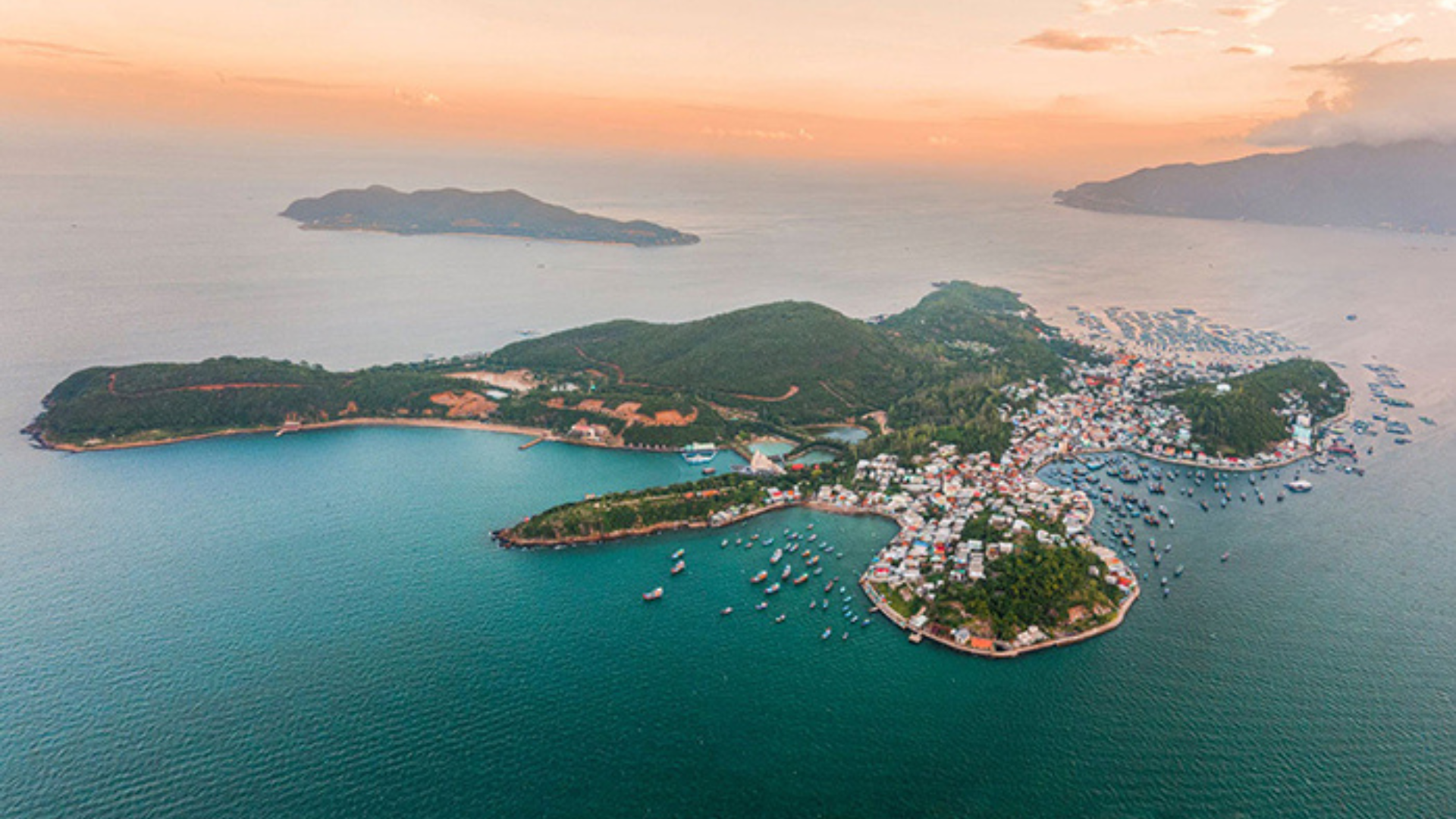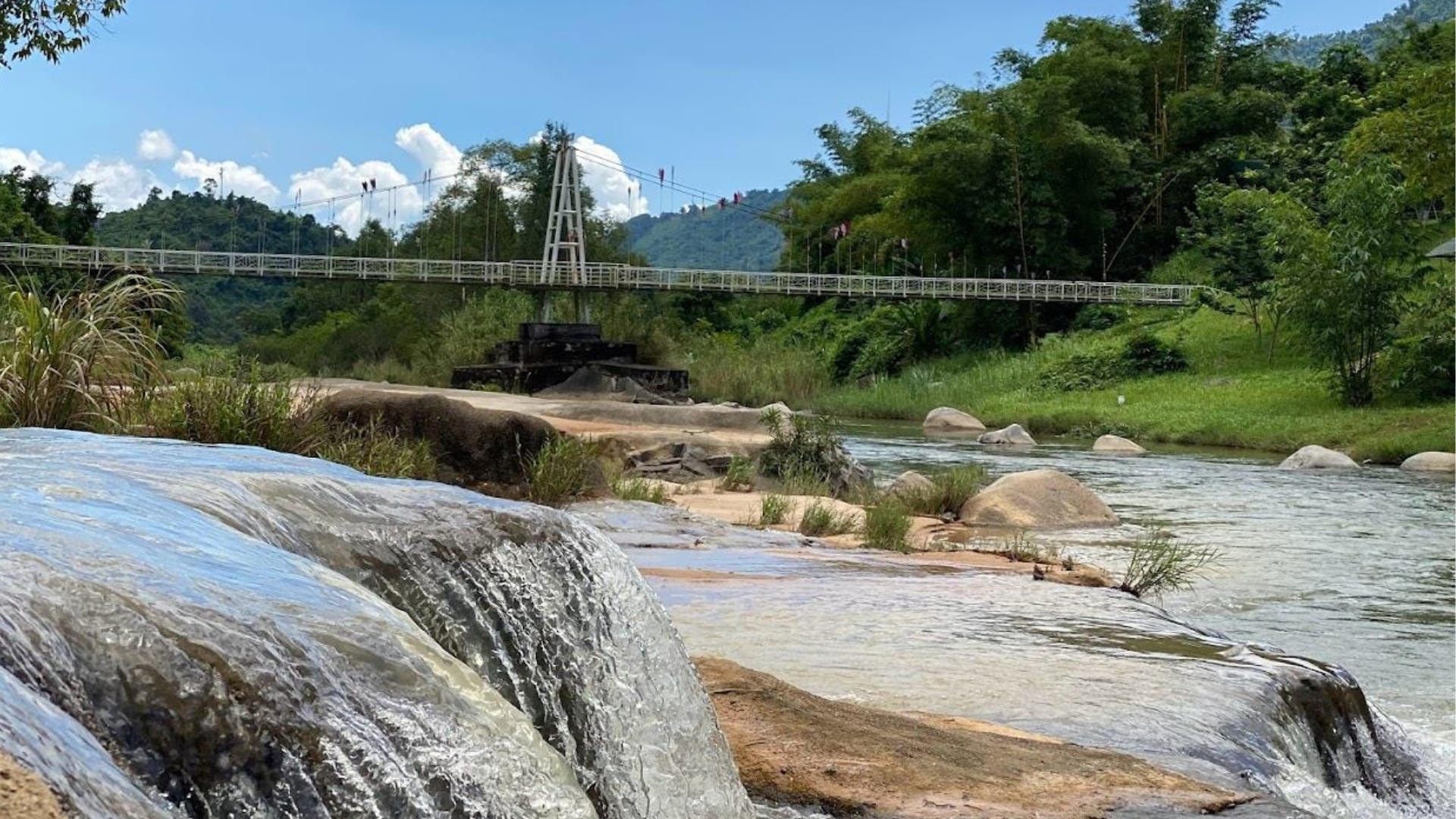Infomation Nhà Thờ Núi
Location: 31 Thai Nguyen, Phuoc Tan Ward, Nha Trang City, Khanh Hoa, Vietnam
Distance: 1 km from city center
Hours: 05:30–17:00 (Weekdays); 05:00–19:00 (Sundays)
Fee: Free
Time Needed: 1–1.5 hours
Review Ratings: 8.7/10
Highlight: Gothic architecture with 38-meter bell tower
Note:
| Detail | Information |
| Location | 31 Thai Nguyen, Phuoc Tan Ward, Nha Trang |
| Distance | 1 km from city center |
| Hours | Weekdays: 05:30–17:00; Sundays: 05:00–19:00 |
| Fee | Free |
| Time Needed | 1–1.5 hours |
| Review Ratings | 8.7/10 |
| Highlight | Gothic architecture with 38-meter bell tower |
1. Why Visit Nha Trang Stone Church?
- Unique Gothic Architecture: The church’s French Gothic design, with stained-glass windows and a 38-meter bell tower, evokes an ancient Roman castle vibe.
- Sacred Ambiance: A tranquil space for reflection, enhanced by 14 Passion of Christ paintings and vibrant rose-shaped windows.
- Iconic Photo Spot: Perfect for capturing Nha Trang’s cultural charm, especially for wedding photography or Instagram-worthy shots.
Step into a serene sanctuary where history and spirituality blend, offering a peaceful escape in the heart of Nha Trang Vietnam.
2. History, Legends & Cultural Significance
Nha Trang Stone Church, officially named Christ the King Cathedral, was constructed between 1928 and 1933 under the guidance of French priest Louis Vallet. Built on Hoang Lan Hill, the site required leveling with 500 mines to create a 4,500-square-meter foundation. Consecrated on May 14, 1933, it became the mother church of the Roman Catholic Diocese of Nha Trang in 1960. The church reflects French colonial influence and remains a spiritual cornerstone for local Catholics. While no specific legends are tied to it, its enduring presence symbolizes Nha Trang’s blend of faith and cultural heritage. The church is a listed relic of Khanh Hoa province, preserved for its architectural and historical value.
Timeline at-a-glance
- 1886: French missionaries establish a temporary chapel on Nha Trang beach.
- 1928: Construction begins on Hoang Lan Hill, led by Louis Vallet.
- 1933: Church consecrated as Christ the King Cathedral.
- 1935: Bell tower with Bourdon Carillond bells inaugurated.
- 1960: Designated as the cathedral of Nha Trang Diocese.
- 1987: Cliffside used for parish cemetery ashes relocation.
3. What You’ll Experience
Scenery Highlights & Photo Spots
The church’s ash-gray stone facade and 38-meter bell tower, crowned with a Holy Cross, stand out against Nha Trang’s skyline. The 53-step staircase from Thai Nguyen Street leads to a spacious courtyard, ideal for panoramic city views. Inside, vibrant stained-glass windows and curved Gothic arches create a luminous, sacred atmosphere, perfect for photography, especially at dawn or dusk when light filters through the rose windows.
Signature Activities
Spiritual Reflection: Attend prayer services or enjoy the serene ambiance for personal meditation.
Architectural Exploration: Admire the Gothic details, including the bell tower’s four clock faces and 14 Passion paintings.
Photography: Capture the church’s exterior, resembling an ancient Roman castle, or the colorful interior with neon-lit altars.
Local Food Nearby
Explore nearby eateries for authentic Nha Trang cuisine. Visit Hải Sản Thanh Sương (3 km away) for fresh seafood like gỏi cá mai or try Bún Chả Cá Tâm for Nha Trang’s famous fish noodle soup, a local favorite. Street food stalls near Nga Sau intersection offer affordable banh mi and che (sweet dessert).
4. How to Get There
Self-Drive
From Nha Trang’s city center, drive 1 km to 31 Thai Nguyen Street. Parking is available nearby for 5.000–10.000 VNĐ for motorbikes or 20.000 VNĐ for cars. The route is straightforward via Nguyen Trai or Le Thanh Ton streets. Use Google Maps for navigation.
Public Bus & Shuttle
Take bus route 01 or 02 from the city center to Nga Sau intersection (5.000 VNĐ), a 2-minute walk from the church. Buses run every 10–15 minutes from 06:00–18:00. Taxis or Grab rides cost around 30.000–50.000 VNĐ.
Guided Day-Tours
Join a Nha Trang city tour including the Stone Church for 400.000–600.000 VNĐ/person, with hotel pick-up. Tours often combine visits to Ponagar Towers and Dam Market. Book via VinWonders or local agencies like Impress Travel.
Comparison Table
| Mode | Cost | Travel Time | Pros | Cons |
| Self-Drive | 5.000–20.000 VNĐ | 5–10 min | Flexible, quick | Limited parking, traffic in peak hours |
| Public Bus | 5.000 VNĐ | 10–15 min | Cheap, frequent | Short walk required |
| Guided Tour | 400.000–600.000 VNĐ | 15–20 min | Hassle-free, includes sights | Less flexible, higher cost |
5. Must-Try Things On-Site
- Admire Gothic Architecture: Explore the church’s stone facade, bell tower, and stained-glass windows.
- Photography Session: Capture the iconic 53-step staircase or interior’s vibrant rose windows.
- Attend a Prayer Service: Join a weekday sermon at 05:00 or 17:00 for a spiritual experience.
- Visit the Maria Cave: Pray or reflect at the Mother Maria statue in the courtyard cave.
- Enjoy City Views: Take in Nha Trang’s skyline from the hilltop courtyard.
6. Nearby Attractions
- Ponagar Towers: 3 km away, a 7th-century Cham temple complex with cultural tours and scenic views.
- Dam Market: 2 km away, a vibrant market for local snacks, souvenirs, and fresh produce.
- Nha Trang Beach: 1.5 km away, perfect for swimming, sunbathing, and seaside cafes.
- VinWonders Nha Trang: 6 km across the bay, an amusement park with rides and aquariums.
These spots offer a mix of culture, shopping, and beach relaxation, enhancing your Nha Trang itinerary.
7. Practical Tips for Visitors
Dress Code & Packing List
Wear modest clothing (long pants, covered shoulders) to respect the sacred space.
Bring a hat, sunscreen, and water for Nha Trang’s warm weather (25–32°C).
Carry a camera for photos and small change for parking or nearby food stalls.
Cost Snapshot
| Item | Cost |
| Entry | Free |
| Parking | 5.000–20.000 VNĐ |
| Nearby Food | 30.000–150.000 VNĐ |
| Guided Tour | 400.000–600.000 VNĐ |
Safety • Etiquette • Accessibility
Safety: The area is safe, but watch for traffic near Nga Sau intersection.
Etiquette: Maintain silence during prayer times (05:00, 17:00 weekdays; multiple times on Sundays). Avoid revealing clothing.
Accessibility: The 53-step staircase may be challenging for those with mobility issues; no wheelchair ramps are available.
Best Time & Weather Watch
Visit from February to August for sunny, dry weather. Early mornings or late afternoons avoid crowds and heat. November to Christmas is peak tourist season.
Weather Chart
| Month | Temp (°C) | Precipitation |
| Feb–Apr | 25–30 | Low |
| May–Aug | 28–32 | Moderate |
| Sep–Jan | 24–28 | High |
8. Sample Half-Day Itinerary
08:00: Depart from city center by taxi or motorbike.
08:15: Arrive at Nha Trang Stone Church, climb the 53-step staircase.
08:30: Explore the Gothic interior, admire stained-glass windows, and visit the Maria Cave.
09:30: Take photos in the courtyard with city views.
10:00: Walk to Nga Sau intersection for bún chả cá at a nearby stall.
11:00: Visit Dam Market for souvenirs or Ponagar Towers for cultural exploration.
12:00: Return to city center or relax at Nha Trang Beach.
This itinerary blends spirituality, culture, and local flavors for a perfect Nha Trang morning.
9. FAQs
What is the history of Nha Trang Stone Church?
Built from 1928 to 1933 by French priest Louis Vallet, it’s a Gothic-style cathedral and a key cultural landmark in Nha Trang.
Is Nha Trang Stone Church free to visit?
Yes, entry is free, but beware of fake ticket sellers at the entrance.
What are the best photo spots at Nha Trang Stone Church?
The 53-step staircase, bell tower, and stained-glass windows inside are ideal for photography.
Can I attend services at Nha Trang Stone Church?
Yes, weekday services are at 05:00 and 17:00; Sunday services include 05:00, 07:00, and more.
Is Nha Trang Stone Church accessible for disabled visitors?
The 53-step staircase limits accessibility; no ramps are available.
What’s the best time to visit Nha Trang Stone Church?
Early mornings or late afternoons in February–August for pleasant weather and fewer crowds.
What are nearby dining options?
Hải Sản Thanh Sương (3 km) offers fresh seafood, while local stalls near Nga Sau serve bún chả cá.
Image Nhà Thờ Núi
See more at placeinvietnam.com
Location Nhà Thờ Núi
Mộ Bác Sĩ Alexandre Yersin
The fact that a Catholic church – a symbol of mercy, hospitality, and holiness – charges entrance fees, parking fees, and “requests” donations in an imposing manner raises serious concerns about the commercialization of religious spaces. In the context of modern society, where transparency and voluntariness are highly valued, such actions provoke negative reactions and cast doubt on the legitimacy and morality of these practices. Under the pretext of “supporting the church,” what occurs is essentially a collection of funds accompanied by control and coercion. The absence of receipts, price lists, or official announcements only highlights the lack of transparency in financial management, undermining the trust of believers and tourists.
Even more troubling is that a church is a sacred place where religious rituals are conducted, urns containing the ashes of the deceased are kept, and people come with their spiritual needs. Turning such a space into a profit-making venture contradicts the spirit of the Gospel, in which Jesus Christ strongly condemned commerce in the temple. The church’s leadership may indeed need financial support to maintain and upkeep the building, but this cannot justify turning holiness into a commodity. If funds are truly necessary, fundraising can be organized openly and civilly – through informational letters, QR codes, bank accounts, or other transparent methods.
The line between genuine religious devotion and a sense of exploitation is very thin. Actions such as setting up “checkpoints” at exits cause irritation and disappointment among parishioners and visitors, eroding trust in the church. In a civilized society, there is no place for commerce under the guise of religion, and people’s faith should not become a tool for profit. It is time for religious organizations to reassess their practices to preserve holiness, moral values, and faith – the foundations upon which religion and society’s spiritual life rest.
















